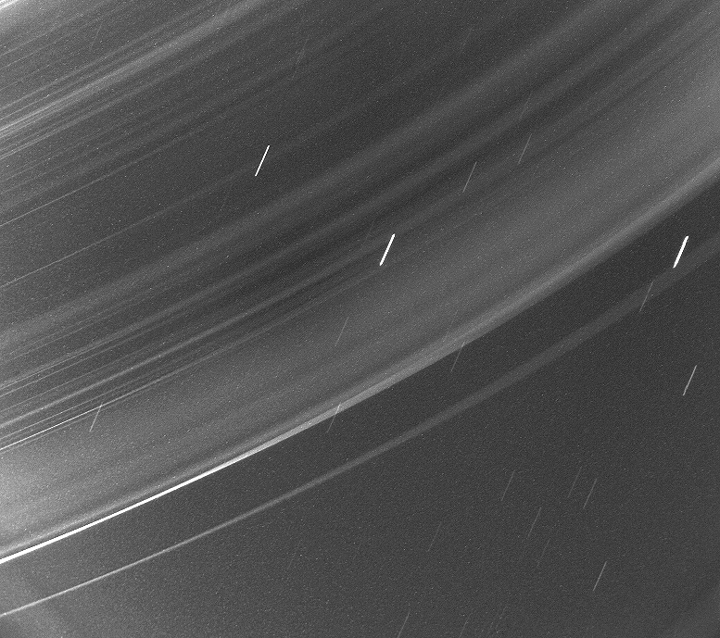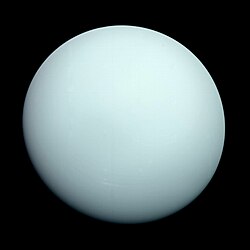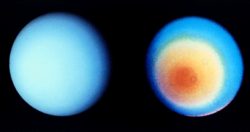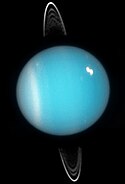FDS 26852.19 Rings of Uranus
Autor:
NASA/Jet Propulsion Lab-Caltech/University of Arizona/Texas A&M University
Formát:
720 x 638 Pixel (306264 Bytes)
Popis:
This dramatic Voyager 2 picture reveals a continuous distribution of small particles throughout the Uranus ring system. Voyager took this image while in the shadow of Uranus, at a distance of 236,000 kilometers (142,000 miles and a resolution of about 33 km (20 ml). This unique geometry -- the highest phase angle at which Voyager imaged the rings -- allows us to see lanes of fine dust particles not visible from other viewing angles. All the previously known rings are visible here, however, some of the brightest features in the image are bright dust lanes not previously seen. The combination of this unique geometry and a long, 96 second exposure allowed this spectacular observation, acquired through the clear filter of Voyager's wide-angle camera. The long exposure produced a noticeable, non-uniform smear as well as streaks due to trailed stars.
The original NASA image has been modified by removal of reseaux marks and other artifacts, and by conversion from GIF to PNG format.
Více informací o licenci na obrázek naleznete zde. Poslední aktualizace: Sat, 08 Feb 2025 15:02:37 GMT
Relevantní obrázky
Relevantní články
Uran (planeta)
Uran je sedmá planeta od Slunce, třetí největší a čtvrtá nejhmotnější planeta ve sluneční soustavě. Řadí se mezi plynné obry a společně s Neptunem i mezi tzv. ledové obry. Jméno má po řeckém bohu Úranovi, bohu nebes. Symboly planety Uran je znak ♅ nebo . I přes to, že je možné Uran za příznivých podmínek pozorovat pouhým okem na noční obloze, nebyl antickými astronomy rozpoznán jako planeta, ale byl považován za hvězdu kvůli pomalé rychlosti a slabé záři. Objev Uranu ohlásil William Herschel 13. března 1781, čímž poprvé v moderní době posunul známé hranice sluneční soustavy.
.. pokračovat ve čtení















